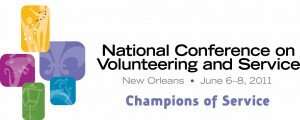 This year’s National Conference on Volunteering and Service is being held in New Orleans; a city that understands the effect that volunteers can have on a city. After hurricane Katrina and the Gulf oil spill, thousands of volunteers from all across the country came to New Orleans and the Gulf Coast to help rebuild and recover. These volunteers have given of their money and time to help rebuild, but there’s still a lot of work done to bring the Gulf Coast back to the way it was before the recent disasters.
This year’s National Conference on Volunteering and Service is being held in New Orleans; a city that understands the effect that volunteers can have on a city. After hurricane Katrina and the Gulf oil spill, thousands of volunteers from all across the country came to New Orleans and the Gulf Coast to help rebuild and recover. These volunteers have given of their money and time to help rebuild, but there’s still a lot of work done to bring the Gulf Coast back to the way it was before the recent disasters.
While, overall, the conference helps people who work with volunteers in the nonprofit and for profit sector, there are three program tracts that will help attendees to tailor their experience to be the most useful for them. The tracts look at the impact that volunteers can have on their community, the strength that volunteers bring to bear when they serve, and how volunteers help to build and support communities.
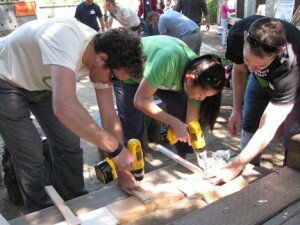 Looking at the impact of volunteers highlights the individual, institutional, and community change that volunteers can bring about through their service. Sessions in the impact track focus on specific solutions that volunteers can bring to economic, environmental, and health problems, disaster management, and veterans’ and education issues that our communities face.
Looking at the impact of volunteers highlights the individual, institutional, and community change that volunteers can bring about through their service. Sessions in the impact track focus on specific solutions that volunteers can bring to economic, environmental, and health problems, disaster management, and veterans’ and education issues that our communities face.
The strength of volunteers is highlighted in sessions that help volunteer managers to more efficiently direct that strength. These sessions will help to harness the innovative ideas, partnerships, and passion that volunteers bring to the organizations that they serve with. Proven methods and emerging trends in volunteer management will be shared in sessions that can help volunteer programs to adapt to the ever changing social and socio-economic realities of society and the volunteering sector.
These sessions will help you to learn how to more effectively manage volunteers and manage for results, how to bring the power of technology and media to bear to support your programs, how to leverage partnerships for results, and how to work with businesses to build successful employee volunteer programs.
Sessions that focus on community not only look at the places where live, but the groups that people belong to and build themselves. These communities can be harnessed to create massive change, and are already primed for volunteering, leadership, and service.
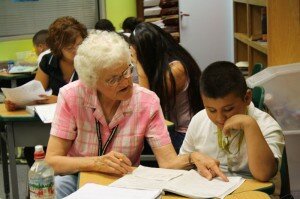 Boomers and youth have a lot to contribute to their communities. There are Cities of Service across the country that are using volunteers to address some of those cities’ most pressing issues. Faith-based and neighborhood organizations are stepping up to fill in where services are lacking in communities. Service is being reimagined across the country, especially service in rural areas.
Boomers and youth have a lot to contribute to their communities. There are Cities of Service across the country that are using volunteers to address some of those cities’ most pressing issues. Faith-based and neighborhood organizations are stepping up to fill in where services are lacking in communities. Service is being reimagined across the country, especially service in rural areas.
This year’s Conference is taking shape to be the largest Conference to date. There will be knowledge shared and connections made here that couldn’t happen anywhere else. And, among all of the learning and networking, we’ll be sure to take some time to celebrate everyone that is working so hard to improve their world through service.
To find out how to register for the National Conference on Volunteering and Service, click here. To find out more about what will be happening at the Conference, follow and like the Conference .
You can find out more about the National Conference on Volunteering and Service on the Points of Light Blog, which looks at what the Conference offers the volunteering sector, and a video from New Orleans mayor Mitch Landrieu.

 We’re starting to enter the time of year where severe thunderstorms, tornadoes, and flooding will be more common than it was over the winter. Severe storms can pop up with little notice, and you might not have time to get everything you need together in one place before the storm strikes.
We’re starting to enter the time of year where severe thunderstorms, tornadoes, and flooding will be more common than it was over the winter. Severe storms can pop up with little notice, and you might not have time to get everything you need together in one place before the storm strikes. You can even make a volunteer project out of building your disaster kit by
You can even make a volunteer project out of building your disaster kit by  Today’s blog post comes from Antoine Colonna d’Istria, an intern with
Today’s blog post comes from Antoine Colonna d’Istria, an intern with  Although they are all at different stages of development, our participants-HandsOn Action Centers in both larger and smaller cities-seem to have the same expectations about SBV. Seeing that SBV could help them meet the growing demand for services from their communities and local corporate partners, they’ve expressed a desire for a sustainable model and some pre-designed programs to implement. Perfect! This is exactly what the Boot Camp was meant for!
Although they are all at different stages of development, our participants-HandsOn Action Centers in both larger and smaller cities-seem to have the same expectations about SBV. Seeing that SBV could help them meet the growing demand for services from their communities and local corporate partners, they’ve expressed a desire for a sustainable model and some pre-designed programs to implement. Perfect! This is exactly what the Boot Camp was meant for! Today’s blog post comes from Charon Gaskins, an AmeriCorps member with
Today’s blog post comes from Charon Gaskins, an AmeriCorps member with 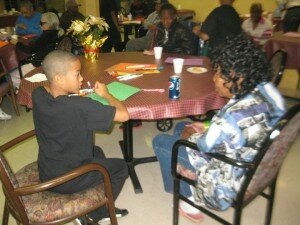 With the help of the resources I’ve found on the website, I’ve successfully organized several different projects in my community. From a snack and learn with elementary students to tilling the land and potting seeds for a community garden, this has been an amazing experience.
With the help of the resources I’ve found on the website, I’ve successfully organized several different projects in my community. From a snack and learn with elementary students to tilling the land and potting seeds for a community garden, this has been an amazing experience.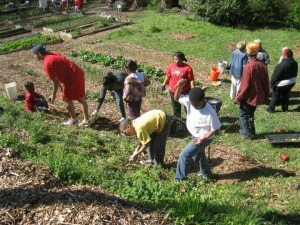 The excitement these students had while working with these seniors was heartwarming, and the seniors were so excited to have a group of youth come to visit them. I was told the students began bugging their teacher about their next service project on the way home from that project!
The excitement these students had while working with these seniors was heartwarming, and the seniors were so excited to have a group of youth come to visit them. I was told the students began bugging their teacher about their next service project on the way home from that project!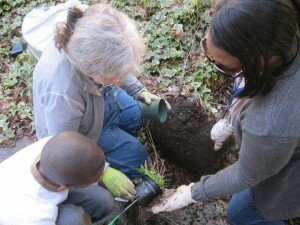 Using social media and making announcements in our different circles, we were able to get about 35 people out in the hot sun ready to work. We tilled about two acres of land and potted over 300 seeds The volunteers for this project ranged from the ages of 13-60 years and everyone walked away from the project excited about coming back to actually plant the seeds in the garden in late April.
Using social media and making announcements in our different circles, we were able to get about 35 people out in the hot sun ready to work. We tilled about two acres of land and potted over 300 seeds The volunteers for this project ranged from the ages of 13-60 years and everyone walked away from the project excited about coming back to actually plant the seeds in the garden in late April.


 32. Be a good listener.
32. Be a good listener.
 1.
1. 



 For the second stage of the Get HandsOn Challenge, we launched
For the second stage of the Get HandsOn Challenge, we launched 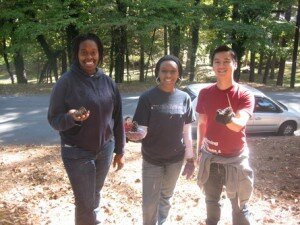 Ken serves as an AmeriCorps National Direct member through the
Ken serves as an AmeriCorps National Direct member through the 
